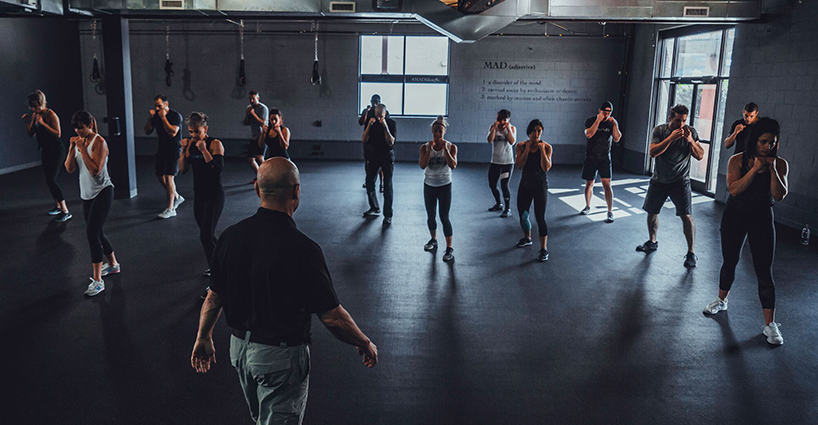Two elite Israeli martial arts specialist and a U.S. Muay Thai Intercontinental Champion walk into the “home” of 17 highly knowledgeable strength and conditioning coaches. There’s no punchline here – just the scene of July’s StrongFirst Combat Training course that took place on the floor of MADabolic Inc.’s flagship location in Charlotte, NC.
With that, here are our top 5 takeaways from our amazing time with StrongFirst leaders, Ronen Katz, Benny Mayer, and Steve Milles:
1. Bridge the gap between “familiar” and “new”. StrongFirst’s Combat Course “bridges the (narrow) gap between StrongFirst [strength training] and fighting-sports athletes. [It’s] purpose is to teach people how to apply StrongFirst’s principles of strength to self-defense, martial arts, and fight sports training.” Essentially, it’s the perfect marriage between kettlebell-dominant movement patterns (i.e. what was familiar to our trainers) and combat (i.e. what was new to most of our trainers). Contrary to what a handful of our trainers surely thought heading into the session, the two systems work in excellent harmony.
As trainers, this course challenged us to adopt new and improve upon existing skills that transcend both worlds of fighting and everyday athleticism. For every kettlebell-based movement we focused on, our StrongFirst leaders introduced a complementary martial arts concept, demonstrating just how translatable these unfamiliar elements are to what we do within the MADabolic walls every single day. Bottom line: regardless of the field or industry in which you live and breathe, there’s no ceiling to your skillset in terms of what you can learn and improve.
2. Be humble. This eight hour session was undoubtedly one of the most humbling experiences we, as MADabolic trainers, have collectively encountered. Here we were, specialists in our own trade of everyday strength and athleticism, sitting beneath three of the most credentialed and lethally skilled fighting sports leaders hailing from one of the industry’s most respected and reputable organizations.
Watching an Israeli security expert place one of our fearless Canadian leaders in a headlock on his own floor was just one of numerous examples that emphasized the significance of: (a) accepting that we do not know everything when it comes to our areas of expertise, and (b) opening ourselves up to vulnerability and…dare we say…being OK with initial failure to prime ourselves for growth. Bluntly put, you can’t learn and absorb if you’re a know-it-all.
3. Break out of your comfort zone. The principles of striking, rapid response, properly utilizing your breath to eliminate distraction, and a plentiful assortment of self-defense concepts were all in play. While on the surface these items may feel and sound familiar, we assure you, in [StrongFirst-style] execution, they were quite foreign at the start. Nevertheless, each well-coached, principle-based system of skill and movement offered safety and sustainability with the promise of translation into our everyday lives. Not to mention, any notion of “personal space” went out the window about five minutes into training once we were charged to pair up and start grappling. Turns out barreling your nose into your peer-turned-opponent’s armpit and throwing your entire body weight into one another breaks the ice in a hurry!
4. Surround yourself with awesome people. No need to get overly semantic here. This point is pretty straight forward. Spending such an intense, laborious, and thought-provoking day with like-minded friends and peers was nothing short of a treat. Anyone in attendance would confirm that the genuine camaraderie among this particular group of trainees was palpable. It pointed out just how valuable and impactful it is to spend time with those who inspire, motivate, and challenge you.
5. A coachable coach is everything. Within our communities, our coaches are each uniquely proficient in and accustomed to the roles of trainer and #MADlifestlye ambassador. We have the privilege of leading the MADness on a daily basis and transferring our knowledge of strength and functional movement to our clients. That said, a great coach isn’t exclusively defined by his/her ability to coach others.
In our opinion, the line between a good coach and an exceptional coach lies in his/her hunger to be coached…to learn and execute new concepts and skills…to leverage that skill in his/her own craft…and to share that knowledge with those who seek growth (in our case, our clients). The role of trainee is oftentimes equally (if not more) fulfilling as the role of trainer.
Photo Credit = Kevin Hopper / Champion Visual



